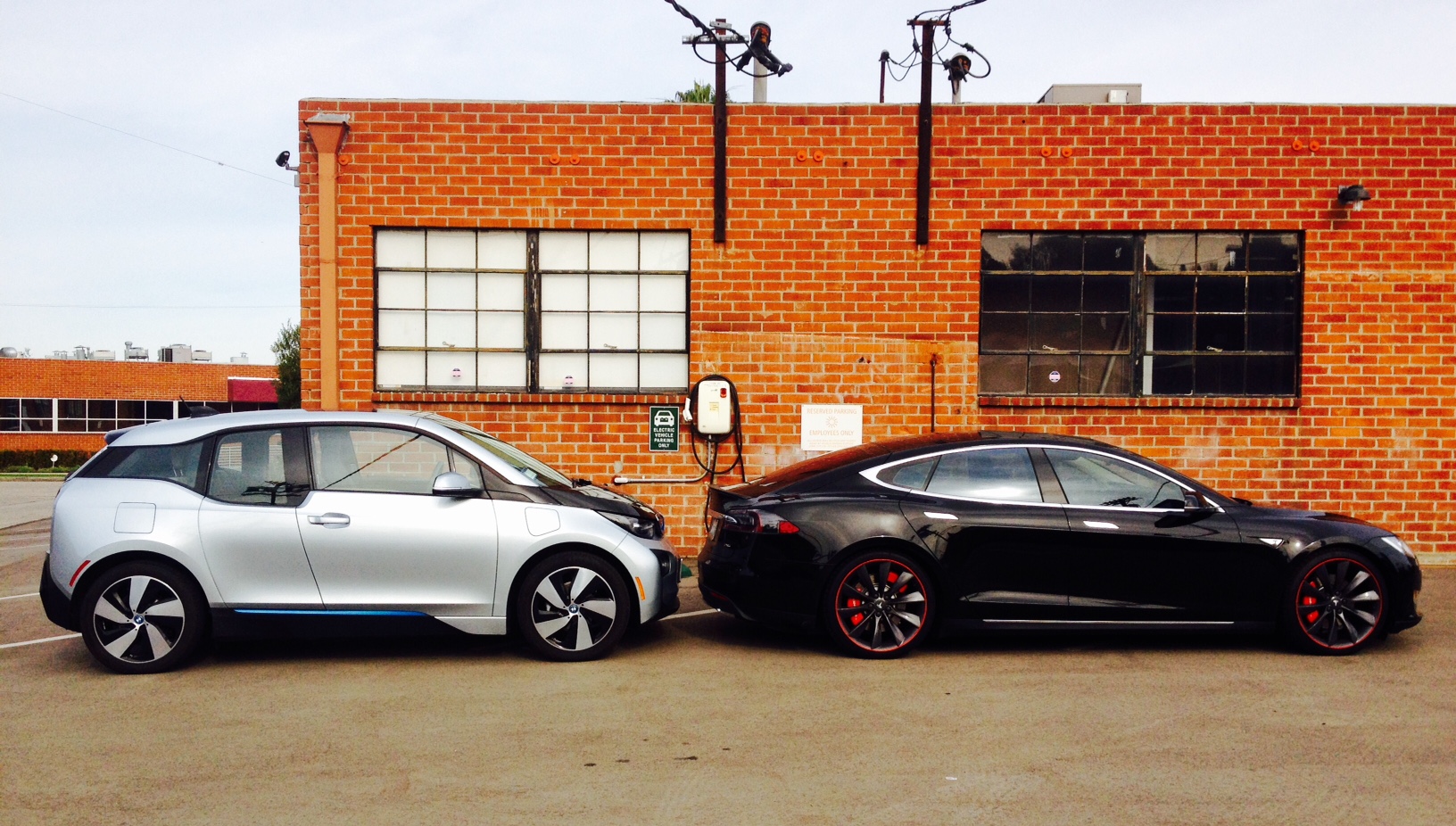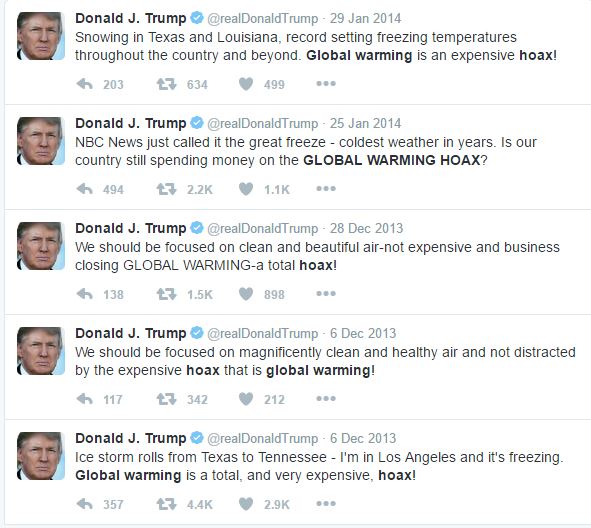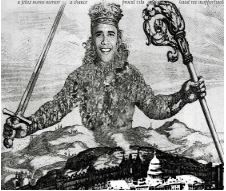News
What will happen to Obama’s National EV Charging Corridor initiative?

As part of an eight year commitment to combat climate change, increase access to clean energy technologies, and reduce U.S. dependence on oil, the Obama administration unveiled a series of executive actions to establish 48 national electric vehicle (EV) charging corridors on U.S. highways. But will the proposed EV charging corridors, which were announced in early November, 2016, stand up to the formidable will of Donald Trump’s transitional head of the EPA, Myron Ebell?
Ebell is director of the Center for Energy and Environment at the conservative Competitive Enterprise Institute and is the lead voice of U.S. climate deniers. He chairs the Cooler Heads Coalition, which comprises over two dozen non-profit groups in this country and abroad that question global warming “alarmism” and oppose “energy rationing” policies. Ebell’s role on the Trump team has been interpreted by many, including Scientific American, National Geographic, and the New York Times, as a sign that the next administration will be looking to drastically reshape the climate policies that the EPA has pursued under the Obama administration.
Since President Obama took office, the number of plug-in EV models has increased from one to more than twenty, battery costs have decreased 70 percent, and the number of EV charging stations has grown from less than 500 in 2008 to more than 16,000 in 2016. Described as “creating a new way of thinking about transportation that will drive America forward,” the National Electric Vehicle Charging Corridors on U.S. Highways initiatives were intended to create 48 designated EV routes which would cover nearly 25,000 miles in 35 states.
The National Electric Vehicle Charging Corridors on U.S. Highways initiative is part of a larger Obama administration plan to lower EV purchase costs through increasing automotive manufacturers’ demand. By promoting EV innovation and adoption and expanding the national EV infrastructure, the Obama administration has fostered a climate in which more than $1 million and 1,211,650 gallons in potential annual fuel savings could be accrued. However, Trump has indicated that his administration will work to remove EPA environmental regulations as a way of allowing American business to thrive.
Trump consistently has been vocal in his skepticism of climate change science, which calls for the shift in U.S. fuel consumption to alternative sources like decentralized electricity.

While on the campaign trail, Trump had focused on lifting restrictions on oil and gas instead of looking to U.S. clean energy and an eventual reduction of reliance on fossil fuels. Trump stated that lifting fossil fuel restrictions would increase GDP by more than $127 billion, add about 500,000 jobs, and increase wages by $30 billion each year over over seven years. Those figures come from the Institute for Energy Research, a nonprofit that advocates for a free-market approach to energy and claims there is an “enormous volume of sensationalized, simplistic and often plain wrong information” on climate change.
“This is not academic research and would never see the light of day in an academic journal. The pioneering research … from years ago is rarely employed any more by economists,” said Thomas Kinnaman, chair of the Economics Department at Bucknell University, who reviewed the IER report. Kinnaman’s analysis was confirmed by Peter Maniloff, assistant professor of economics at the Colorado School of Mines, who said the IER study is based on a questionable assumption. “The IER report assumes that policy restrictions are the major factor holding back coal, oil, and gas production.” He went on to describe the rationale as more to do with straightforward economics,” he said. “Domestic oil drilling on available land has dropped by three-quarters since 2014 due to low prices.”
Another area in which the Obama administration sought to promote EV clean energy was the release of up to $4.5 billion in loan guarantees to support commercial-scale deployment of innovative EV charging facilities. In support, nearly 50 industry members signed onto a “Guiding Principles to Promote Electric Vehicles and Charging Infrastructure” agreement. Thirty-eight new businesses, non-profits, universities, and utilities committed to provide EV charging access for their workforces, with 24 state and local governments partnering with the Administration to increase the procurement of EVs in their fleets.
Investment in such a robust network of charging facilities contradicts energy policy promoted by Ebell, who has said that “a lot of third, fourth and fifth rate scientists have gotten a long ways” by embracing climate change. He frequently mocks climate leaders like Al Gore and has called the movement the “forces of darkness” because “they want to turn off the lights all over the world.”
Ebell has been a voice in the ear of Congress with his opposition to President Obama’s Clean Power Plan. This is a series of policy initiatives designed to lower emissions from fossil fuel generating plants, particularly those that still rely on coal to generate electricity. The United States Department of Transportation (DOT) would be the liaison among the administration, states, localities, and the private sector for the EV corridors. Already, 28 states, utilities, vehicle manufacturers, and change organizations have committed to accelerating the deployment of an EV charging infrastructure on the DOT’s corridors. The goal is that these initial corridors would serve as a basis for “coast to coast zero emission mobility on our nation’s highways.”

Obama caricature [Source: globalwarming.org]
Earlier, Ebell had written a blog post stating that the Obama administration’s Existing Source Performance Standards contained within the Clean Power Plan were “colossally costly” and “obviously illegal.” His post includes the mashup of President Obama.
To ascertain optimal national EV charging deployment scenarios, including along DOT’s designated fueling corridors, the United States Department of Energy (DOE) is in the midst of conducting two studies. Developed with national laboratories and with input from a range of stakeholder, the first is a national EV infrastructure analysis that identifies the optimal number of charging stations for different EV market penetration scenarios. The second will provide best practices for EV fast charging installation, including system specifications as well as siting, power availability, and capital and maintenance cost considerations.
The future of U.S. coast to coast zero emission mobility on our nation’s highways is in serious jeopardy with President Trump in the White House.
News
Tesla UK sales see 14% year-over-year rebound in June: SMMT data
The SMMT stated that Tesla sales grew 14% year-over-year to 7,719 units in June 2025.

Tesla’s sales in the United Kingdom rose in June, climbing 14% year-over-year to 7,719 units, as per data from the Society of Motor Manufacturers and Traders (SMMT). The spike in the company’s sales coincided with the first deliveries of the updated Model Y last month.
Model Y deliveries support Tesla’s UK recovery
Tesla’s June performance marked one of its strongest months in the UK so far this year, with new Model Y deliveries contributing significantly to the company’s momentum.
While the SMMT listed Tesla with 7,719 deliveries in June, independent data from New AutoMotive suggested that the electric vehicle maker registered 7,891 units during the month instead. However, year-to-date figures for Tesla remain 2% down compared to 2024, as per a report from Reuters.
While Tesla made a strong showing in June, rivals are also growing. Chinese automaker BYD saw UK sales rise nearly fourfold to 2,498 units, while Ford posted the highest EV growth among major automakers, with a more than fourfold increase in the first half of 2025.
Overall, the UK’s battery electric vehicle (BEV) demand surged 39% to to 47,354 units last month, helping push total new car sales in the UK to 191,316 units, up 6.7% from the same period in 2024.
EV adoption accelerates, but concerns linger
June marked the best month for UK car sales since 2019, though the SMMT cautioned that growth in the electric vehicle sector remains heavily dependent on discounting and support programs. Still, one in four new vehicle buyers in June chose a battery electric vehicle.
SMMT Chief Executive Mike Hawes noted that despite strong BEV demand, sales levels are still below regulatory targets. “Further growth in sales, and the sector will rely on increased and improved charging facilities to boost mainstream electric vehicle adoption,” Hawes stated.
Also taking effect this week was a new US-UK trade deal, which lowers tariffs on UK car exports to the United States from 27.5% to 10%. The agreement could benefit UK-based EV producers aiming to expand across the country.
News
Tesla Model 3 ranks as the safest new car in Europe for 2025, per Euro NCAP tests
Despite being on the market longer than many of its rivals, the Tesla Model 3 continues to set the bar for vehicle safety.

The Tesla Model 3 has been named the safest new car on sale in 2025, according to the latest results from the Euro NCAP. Among 20 newly tested vehicles, the Model 3 emerged at the top of the list, scoring an impressive 359 out of 400 possible points across all major safety categories.
Tesla Model 3’s safety systems
Despite being on the market longer than many of its rivals, the Tesla Model 3 continues to set the bar for vehicle safety. Under Euro NCAP’s stricter 2025 testing protocols, the electric sedan earned 90% for adult occupant protection, 93% for child occupant protection, 89% for pedestrian protection, and 87% for its Safety Assist systems.
The updated Model 3 received particular praise for its advanced driver assistance features, including Tesla’s autonomous emergency braking (AEB) system, which performed well across various test scenarios. Its Intelligent Speed Assistance and child presence detection system were cited as noteworthy features as well, as per a WhatCar report.
Other notable safety features include the Model 3’s pedestrian-friendly pop-up hood and robust crash protection for both front and side collisions. Euro NCAP also highlighted the Model 3’s ability to detect vulnerable road users during complex maneuvers, such as turning across oncoming traffic.
Euro NCAP’s Autopilot caution
While the Model 3’s safety scores were impressive across the board, Euro NCAP did raise concerns about driver expectations of Tesla’s Autopilot system. The organization warned that some owners may overestimate the system’s capabilities, potentially leading to misuse or inattention behind the wheel. Even so, the Model 3 remained the highest-scoring vehicle tested under Euro NCAP’s updated criteria this year.
The Euro NCAP’s concerns are also quite interesting because Tesla’s Full Self-Driving (FSD) Supervised, which is arguably the company’s most robust safety suite, is not allowed for public rollout in Europe yet. FSD Supervised would allow the Model 3 to navigate inner city streets with only minimal human supervision.
Other top scorers included the Volkswagen ID.7, Polestar 3, and Geely EX5, but none matched the Model 3’s total score or consistency across categories. A total of 14 out of 20 newly tested cars earned five stars, while several models, including the Kia EV3, MG ZS, and Renault 5, fell short of the top rating.
Elon Musk
Why Tesla’s Q3 could be one of its biggest quarters in history
Tesla could stand to benefit from the removal of the $7,500 EV tax credit at the end of Q3.

Tesla has gotten off to a slow start in 2025, as the first half of the year has not been one to remember from a delivery perspective.
However, Q3 could end up being one of the best the company has had in history, with the United States potentially being a major contributor to what might reverse a slow start to the year.
Earlier today, the United States’ House of Representatives officially passed President Trump’s “Big Beautiful Bill,” after it made its way through the Senate earlier this week. The bill will head to President Trump, as he looks to sign it before his July 4 deadline.
The Bill will effectively bring closure to the $7,500 EV tax credit, which will end on September 30, 2025. This means, over the next three months in the United States, those who are looking to buy an EV will have their last chance to take advantage of the credit. EVs will then be, for most people, $7,500 more expensive, in essence.
The tax credit is available to any single filer who makes under $150,000 per year, $225,000 a year to a head of household, and $300,000 to couples filing jointly.
Ending the tax credit was expected with the Trump administration, as his policies have leaned significantly toward reliance on fossil fuels, ending what he calls an “EV mandate.” He has used this phrase several times in disagreements with Tesla CEO Elon Musk.
Nevertheless, those who have been on the fence about buying a Tesla, or any EV, for that matter, will have some decisions to make in the next three months. While all companies will stand to benefit from this time crunch, Tesla could be the true winner because of its sheer volume.
If things are done correctly, meaning if Tesla can also offer incentives like 0% APR, special pricing on leasing or financing, or other advantages (like free Red, White, and Blue for a short period of time in celebration of Independence Day), it could see some real volume in sales this quarter.
You can now buy a Tesla in Red, White, and Blue for free until July 14 https://t.co/iAwhaRFOH0
— TESLARATI (@Teslarati) July 3, 2025
Tesla is just a shade under 721,000 deliveries for the year, so it’s on pace for roughly 1.4 million for 2025. This would be a decrease from the 1.8 million cars it delivered in each of the last two years. Traditionally, the second half of the year has produced Tesla’s strongest quarters. Its top three quarters in terms of deliveries are Q4 2024 with 495,570 vehicles, Q4 2023 with 484,507 vehicles, and Q3 2024 with 462,890 vehicles.
-

 Elon Musk4 days ago
Elon Musk4 days agoTesla investors will be shocked by Jim Cramer’s latest assessment
-

 News1 week ago
News1 week agoTesla Robotaxi’s biggest challenge seems to be this one thing
-

 Elon Musk2 weeks ago
Elon Musk2 weeks agoFirst Look at Tesla’s Robotaxi App: features, design, and more
-

 News2 weeks ago
News2 weeks agoSpaceX and Elon Musk share insights on Starship Ship 36’s RUD
-

 News2 weeks ago
News2 weeks agoWatch Tesla’s first driverless public Robotaxi rides in Texas
-

 News1 week ago
News1 week agoWatch the first true Tesla Robotaxi intervention by safety monitor
-

 News2 weeks ago
News2 weeks agoTesla has started rolling out initial round of Robotaxi invites
-

 Elon Musk2 weeks ago
Elon Musk2 weeks agoTesla to launch in India in July with vehicles already arriving: report

















